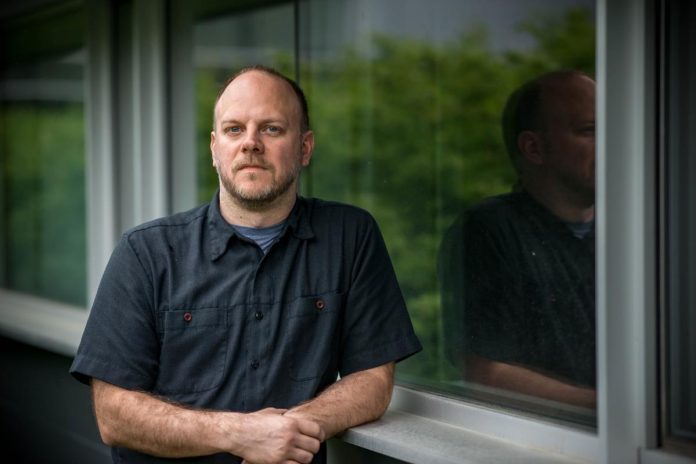Theoretical particle physicist Dr. Derek Harnett received a grant from the Natural Sciences and Engineering Research Council (NSERC) totalling $75,000 to continue his research on exotic hadrons. He is one of three UFV scientists who have received the five-year federal grants to continue their research.
Harnett studies hadrons, a class of particles made up of quarks bound together by the strong nuclear force. The most well-known of these hadrons are protons and neutrons, but Harnett says there are hundreds of others that have been identified.
“Probably the reason they’re not familiar to most people is because they have a finite lifetime, so they quickly, by our standards, decay into particles. A significant number of those particles have a lifetime of about 10-23 seconds,” said Harnett.
Harnett works with a specific collection of theoretical hadrons, hybrid hadrons, that contain gluons in addition to the quarks. His research focuses on using known properties of the quarks and gluons that make up the hadrons to predict properties of the hybrid hadrons.
These predictions guide researchers at particle colliders, the most well-known being the Large Hadron Collider, to work towards identifying the particles experimentally.
“These particles are hypothesized, and predicted to exist decades ago, but as of yet have not been conclusively identified by experiments. Probably, one of the reasons is that the theoretical predictions of their behaviour are just not good enough to guide the experimental searches,” said Harnett.
A new piece of software, integrated into Hartnett’s current software programs by his summer NSERC research student Steven Esau, will look to improve their predictions.
The program was a PhD software project, published online for free use. Its purpose is to calculate integrals that would otherwise not be possible to solve numerically.
“Steven basically figured out the algorithm, and wrote out all the code that was needed to bridge the gap between what we were doing, and how this person’s code would help us finish the problem off,” said Harnett. “And it worked perfectly.”
Harnett hopes that the program will allow him to begin predicting the decay rate of hybrid hadrons, a problem that would previously have been impractical to solve, in addition to predicting their masses.
“Trying to track down those decays, and trying to attach decay rates or decay probabilities to them, is exactly the kind of calculation that we would get to, and the integrals would be ridiculous,” said Harnett. “I think I’m in good shape to start to branch off and look at that now.”
Multiple follow up projects are being planned from the possibilities the software has opened up, and Harnett hopes to get the work published this summer.
The field of theoretical particle physics is purely discovery research, and is geared towards understanding the implications of the strong nuclear force, not practical application.
Harnett described it like electromagnetism. Though it is easy to understand its importance now, for practical uses like computers and lighting, it all started from someone wondering why magnets stuck together.
“If you tell a physicist to build a better mousetrap, they won’t be interested. But, if you tell them to take a picture of the beginning of the universe, somewhere along the lines they’ll have developed a better mousetrap.”


